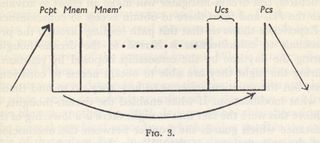Desultorily, with no ambitions for speed or even completion, I have been reading Edmund Spenser's Faerie Queene (1590-1609). I had always been daunted by its reputation (long, boring), but Keats goes on and on about Spenser in his letters, and in The Magician's Book, my friend Laura Miller offhandedly suggests that the sort of children who like C. S. Lewis's Narnia books may grow up to be the sort of adults who like the Faerie Queene, so I thought I should show a little gumption.
Spenser's vocabulary was deliberately archaic even in the sixteenth century, and that's an obstacle. You win quite a few rounds of OED bingo while reading Spenser. (To win a round of OED bingo, a game of my own devising, when you come across a word you don't know, you look it up in the OED, and if you find the same passage that you've been reading among the usage examples, you win. For example, if, like me, you don't know the meaning of stound, then upon discovering the word in a line of Spenser's, you turn to the OED, learn that it refers to a sharp pang, attack, or shock, and just below this definition you find the lines of verse that sent you there:
Then when his deare Duessa heard, and saw
The evill stownd, that daungered her estate . . .
Bingo! I've also won rounds while reading Trollope. Boody, meaning "to sulk," is a word that only Trollope seems ever to have used.)
The Faerie Queene isn't like Spenser's lyric poetry, which I've liked since college; it's more impersonal, even monumental. Moreover, it's allegory—another obstacle to modern enjoyment. In principle I don't mind it that one character stands for virtue, another for virginity, etc., but many of Spenser's characters represent their ideas so impartially that they don't quite come across as people. Add in the poem's resort to fantastical and sometimes gruesome imagery, and the reader sometimes feels as if he is trapped in another person's unconscious, prey to mysterious forces incarnated as monsters, elves, and beauties, all lacking the sort of personal self that might in a pinch be negotiated with.
An exception to this generalized quality is the character Despair, who appears in book 1, canto 9. Despair, rather modernly, not only represents an idea but gives voice to it and has an almost personal way of thinking about it.
Personal and creepy. He's thoroughly unpleasant. Greasy-haired and lantern-jawed, he is discovered by Red Cross, the first canto's hero, sitting on the floor of a cave beside a man whom he has just encouraged to stab himself. The corpse, Spenser reports, is still wallowing "in his owne yet luke-warme blood." Red Cross threatens to kill Despair, who in his defense points out that he didn't kill the man beside him: "None else to death this man despayring drive, / But his owne guiltie mind deserving death." Moreover, Despaire continues, the man is now at peace, which it's hardly kind for Red Cross to begrudge him:
He there does now enjoy eternall rest
And happie ease, which thou doest want and crave,
And further from it daily wanderest:
What if some little paine the passage have,
That makes fraile flesh to feare the bitter wave?
Is not short paine well borne, that brings long ease,
And layes the soule to sleepe in quiet grave?
Sleepe after toyle, port after stormie seas,
Ease after warre, death after life does greatly please.
Everyone dies, Despair continues; so why try to avoid death? Humans are naturally sinful, and therefore the longer they live, the more sin they commit. Despair reminds Red Cross, for example, that not long ago Red Cross betrayed his beloved Una with the fetching but evil Duessa. Isn't Red Cross himself guilty enough already? Does he really want to live longer and risk adding to his budget of misdoing? "Then do no further goe, no further stray," Despair counsels, "But here lie downe, and to thy rest betake." Despair hands Red Crosse a dagger. Red Crosse lifts it up . . .
Una herself stops him. She calls Red Cross "faint harted," which isn't quite fair, but she reminds him that she's relying on him to fight a dragon, and that's sufficient to liberate him from Despair's spell.
Not long after reading Red Cross's encounter with Despair, I picked up the psychologist Thomas Joiner's recent book Myths about Suicide (Harvard University Press, 2010). Unhappily, several friends of mine have died by their own hand over the years, so I was reading for the personal reason of wanting to understand. Joiner is out to explode a number of canards about suicide that he believes untrue. He's more impatient with the psychoanalytic tradition than I am, though I'm sympathetic with his exasperation, particularly with the orthodoxies of mid-twentieth-century American psychoanalysis, which got quite sclerotic. He repeats some of his material from chapter to chapter, but perhaps that's because he expects people to read the book in pieces, turning to the myth that they're curious about, rather than all the way through, as I happened to.
I learned a great deal from Joiner's book. I think he would give Edmund Spenser's representation of suicidal despair a B+. He wouldn't have approved of Una's aspersion on Red Cross's bravery, for example, because he considers the notion that suicides are cowards to be false. A suicide has to overcome natural aversion to self-harm, and the effort sometimes requires near-incredible will-power and toughness. Joiner would, however, have overwhelmingly approved of Una's intervention, and of her indication to Red Cross that he is wanted and needed.
Joiner is a strict logician, and his angriest debunking is of the psychoanalytic notion that "suicide is an act of anger, aggression, or revenge." According to this theory, first mooted by Freud, Red Cross's real impulse for trying to stab himself would have been anger or resentment of someone close to him. Who, though—Una? The notion "fails to explain why so many people who die by suicide take steps to make their deaths easier on loved ones," Joiner writes. Survivors of a suicide often feel angry and may perceive themseves to have been attacked by the deed, but suicides motivated by anger, Joiner suspects, are rare. Those contemplating suicide are much more likely to feel "that they are bereft and that their deaths will be a service to others."
Joiner believes that one reason suicides are so difficult for others to understand is that suicide is the end-result of three long processes that change the way suicidal people think about themselves and the world: "learned fearlessness, perceived burdensomeness, and failed belongingness." It isn't natural to harm oneself, and suicides have learned to be fearless about self-hurt, either because their careers (the practice of medicine, military service) or life experiences (Holocaust survival, anorexia) have inured them to pain and trauma, or because they have managed to inure themselves by repeated attempts. By "perceived burdensomeness," Joiner explains, he means that suicides come to hold "the view that one burdens others to such a degree that one's death will be worth more than one's life." By "failed belongingness," he means that they feel "profoundly alienated from others." Una's request for Red Cross to fight a dragon at once offsets his perception of himself as a burden—as the pit of accumulating sinfulness that Despair is trying to insinuate into his self-image—and reintegrates him into the social world.
That sense of integration seems crucial. Not much in the study of suicide is based on rock-solid scientific proof, Joiner explains, because it's not the sort of phenomenon that it would be ethical to experiment with. Intriguingly, however, the only clinical intervention proven to lower death rates is a very simple one: if patients hospitalized for a suicide attempt later receive "brief expressions of concern and reminders that the treatment agency was accessible when patients needed it," fewer of them go on to die by suicide. The benefit was first demonstrated with personalized, signed letters, but a later study showed that the benefit persisted even if the expression took the form of a computer-generated postcard. Even a small gesture had a powerful effect.
There's overwhelming evidence, in fact, that it's untrue that "If people want to die by suicide, we can't stop them." Una's no-nonsense yanking of Red Cross from Despair's cave is, here too, a model. Studies have repeatedly shown that when suicide-prevention barriers are added to a bridge, the number of suicides from that bridge drops, and the number of suicides from other bridges nearby does not rise. After 1963, Joiner reports, suicides in Britain dropped by a third merely because that year "Britain switched from coke gas to natural gas for domestic use" and "coke gas is far more lethal." The rates didn't rise again later. Similarly, when Britain outlawed packages of acetaminophen and aspirin containing more than 32 pills, deaths by overdose of those drugs dropped 22 percent, and that decrease, too, became permanent. After Australia banned automatic and semi-automatic weapons in 1996, suicide by firearms dropped from about 492 yearly to 247, and no increases in other methods of death was observed.
Everyone who attempts suicide is ambivalent, Joiner believes, and therefore apparently contingent factors can be decisive, such as access to means and minor positive or negative social signals. The person contemplating suicide isn't seeing the big picture, and this is why only about a quarter leave notes, and why those few notes tend to focus on practical, short-term matters, like where to find the keys to the car. Joiner refers to this as "cognitive constriction," and Red Cross certainly falls into it. He forgets, after all, about a whole dragon.


